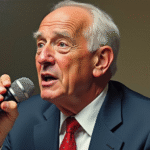Understanding Public Officials’ Responsibility
When questioning the limits of public officials’ responsibility in carrying out their duties, it’s essential to recognize that higher-ranking positions come with greater accountability for the actions of subordinates. Consequently, corruption scandals run directly from the event’s beneficiary to the power structure that shields them.
The Impact of Corruption Scandals
High-ranking officials, such as presidents in democratic countries, face scrutiny not only from themselves and their families but also from individuals they directly appoint and control. Misconduct by a secretary of Governance or a high-ranking official in any department has a direct impact on the president’s reputation.
Adán Augusto López: A Case Study
The case of Adán Augusto López exemplifies the logic inherent in priismo hegemonic regimes, where incoming six-year terms imprisoned officials from the previous period to signal a break from the past. In the era of the 4T, this phenomenon becomes more complex as loyalty to the predecessor remains unquestionable. However, media exposure of alleged corrupt acts weakens the entire movement.
Legitimacy and Shared Responsibility
Sheinbaum’s presidential legitimacy stems directly from López Obrador, preventing her from causing a rift with him. Simultaneously, alleged enrichment acts by Adán Augusto López during the López Obrador era link him directly to the former president, sharing responsibility for the irregularities committed.
Intertwined Destinies
Beyond personal ties, López Obrador was Tabasco’s governor, the region where AMLO built his life project. López Obrador also served as Secretary of Governance, operating much of the political framework ensuring the 4T’s continuity under Claudia Sheinbaum. Sacrificing Adán Augusto López would severely damage Andrés Manuel and the 4T as a whole.
The Caudillo vs. Institutional Regime
This situation highlights the difference between caudillo regimes, like Calles’, and institutional regimes, such as Cárdenas’. The latter allowed power transition stability and clearer mandate demarcation between leaders. Relying on the caudillo figure to maintain indefinite, unchecked power is a perilous path riddled with personal ambitions and obstacles that could derail the project.
Key Questions and Answers
- What is the main topic of this article? The limits of public officials’ responsibility and a case study on Adán Augusto López within the 4T regime.
- Who is Adán Augusto López, and why is he relevant? Adán Augusto López is a former governor of Tabasco and Secretary of Governance under the López Obrador administration. His close ties to current President Andrés Manuel López Obrador (AMLO) make his situation significant for understanding the 4T regime’s dynamics.
- How does the 4T regime differ from previous priismo hegemonic regimes? The 4T regime faces a more complex situation due to unquestionable loyalty towards the predecessor, AMLO. Media exposure of alleged corrupt acts weakens the entire movement, unlike previous regimes where incoming officials signaled a break from the past by imprisoning predecessors’ officials.
- What are the risks of relying on caudillo figures for indefinite power? Relying on the caudillo figure to maintain unchecked power is a dangerous path filled with personal ambitions and obstacles that could derail the project, hindering stability in power transitions and clear mandate demarcation between leaders.






